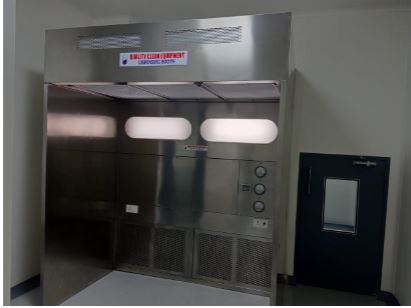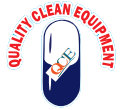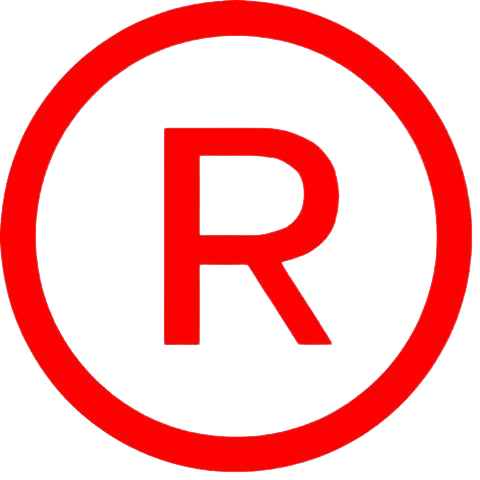
An SS Reverse Laminar Airflow (Dispensing & Sampling) Booth is a specialized piece of equipment used in controlled environments, such as laboratories, cleanrooms, and pharmaceutical facilities, to provide a controlled and clean workspace for activities involving the dispensing and sampling of materials. This type of booth helps protect both the operator and the materials from contamination by maintaining a controlled airflow pattern.
Here’s what each term means in the context of the booth:
- SS (Stainless Steel): Stainless steel is commonly used in cleanroom equipment due to its durability, ease of cleaning, and resistance to corrosion. An SS Reverse Laminar Airflow Booth would likely be constructed with stainless steel components to meet cleanroom standards.
- Reverse Laminar Airflow: Unlike standard laminar airflow, where filtered air moves from a clean area to an uncontrolled area, reverse laminar airflow involves directing filtered air from the uncontrolled area (outside the booth) towards the controlled area (inside the booth). This prevents external contaminants from entering the workspace.
- Dispensing & Sampling: The booth is designed for activities such as dispensing materials (like powders, liquids, or chemicals) and sampling materials (collecting samples for analysis). These activities need to be performed in a controlled environment to prevent cross-contamination or exposure to external particles.
Key features of an SS Reverse Laminar Airflow (Dispensing & Sampling) Booth may include:
- HEPA/ULPA Filtration: High-efficiency particulate air (HEPA) or ultra-low penetration air (ULPA) filters are used to remove particles and contaminants from the incoming air, ensuring that the air inside the booth remains clean.
- Airflow Control: The booth will have a controlled airflow pattern to prevent the intrusion of contaminants. This might involve maintaining a higher pressure inside the booth than outside (positive pressure) to prevent external air from entering.
- Work Area Design: The interior of the booth is designed to provide a clean and easily cleanable surface, often with smooth stainless steel surfaces to prevent the accumulation of particles.
- Glove Ports: If the booth is used for handling materials, glove ports might be present to allow the operator to manipulate materials inside the booth without direct contact.
- Air Velocity Monitoring: The booth might have sensors to monitor and control the airflow velocity, ensuring that the desired laminar airflow pattern is maintained.
- Lighting: Adequate lighting is crucial for accurate dispensing and sampling activities. The booth would likely have built-in lighting to illuminate the workspace.
When considering the use of an SS Reverse Laminar Airflow (Dispensing & Sampling) Booth, it’s important to choose a model that meets the specific requirements of your application and adheres to industry standards for contamination control and safety.
LOCATION:
| VASAI | VAPI | DAMAN | HARIYANA | GOA |
| ANDHERI | BARAMATI | AHMEDABAD | HARIDWAR | RAJASTHAN |
| THANE | NASHIK | KOLKATA | SIDDCUL | UDYAPUR |
| TALOJA | DAHEJ | CHENNAI | SIKKIM | HYDERABAD |
| PALGHAR | SURAT | BENGALURU | INDORE | TURBHE |
| BOISAR | VADODARA | BADDI | UTTAR PRADESH | HINJWADI |

